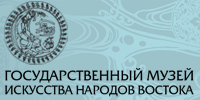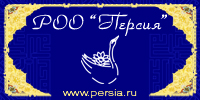Oriental Collection № 3/2011

A picture story by Darya Khadeeva, published under our traditional «Impressions» section, features the temple of goddess Minakshi (India).
Larisa Kuz’menko. The World They Had Lived In. The exhibition «Russian China» had opened in the State Museum of Oriental Art in Moscow. The exhibits from museum and private collections reflect the culture of Russian emigrants in China in the 1st half of the 20th century. Russian artists and writers had played a significant part in the mutual enrichment of the Oriental and Western cultures.
Yelizaveta Malinina. Where the Energy Is Born. The mystic aura that surrounds Mount Kurama in the vicinity of Kyoto, had long since attracted pilgrims and ordinary people who wish to see the Shinto shrine, sacred tress and natural phenomena, as well as to soak oneself in the atmosphere of ancient traditions.
Konstantin Panchenko. The Umayyads and Some Adrenaline. A risky journey of the author and his companions from Jerusalem to the ruins of Jericho, the oldest town on Earth, through Israeli and Palestinian blockposts. The essay reconstructs the history of Jericho, describes in detail the lifestyle of Umayyad Caliph Hisham and the arrangement of his palace.
Andrey Strelkov. The Dragon of Blue Lake. The Blue Lake, which is sacred for the Tibetans, is located 150 kilometres from the well-known Gumbum Jampa-ling monastery. A lot of beliefs are related to this lake, and one of these tells about the dragon that lives here.
Sergey Kiselev, Ol’ga Kiseleva-Sonntag. A Mission in the Tropics. Despite the tolerant attitude of the Thailand’s authorities towards Christianity, this religion had never become widespread in that country. The authors of this article decided to clarify the reasons for this.
Yuriy Averyanov. The Legends and Stories about Haji Bektash. In Turkish Kappadokia, there is a village of Hajibektash, named after the Moslem saint of the 13th century. The author relates the saint’s life and tells about his journey to Hajibektash and to the hermitage located there, about the modern followers of this almost legendary Sufi.
Tatyana Filatova. From Persian Lion to Russian Eagle. The Museums of the Moscow Kremlin hold quite a few diplomatic presents send by Persian Shahenshahs to Russian Tsars. Amog these are the outstanding works of decorative art. Moreover, a notable historical chapter is related to each of the exhibits.
Eleonora L’vova. «African Indians», In Brief «the Asians». Indian communities have for long existed in Ethyopia and Tanzania. The Indians might succeed in business and consider the country where they live as «their own», but they do not fall out of touch with their motherland, keeping their language, beliefs, and culture.
Dmitriy Ivanov. «Curious Things» from the Kunstkamera. The specialists from the Museum of Anthropology and Ethnography, Russian Academy of Sciences (Kunstkamera) had managed to reconstruct the history of formation of the earliest museum collection of Buddhist artifacts in Russia.
Nelli Leschenko. A Horseman above the Town. Date Masamune, the founder and ruler of the town of Sendai in Japan (16—17th century) showed his worth not only as a brave warrior, but also as a skilful administrator and diplomat.
Asya Petrichenko. Decorating the Com-mandment. It might be that Jewish merchants had become acquainted with the art of paper carvings in Middle Eastern countries, where it came from China as early as in the 8th century. This art is still alive today, and it reflects traditional Judaic symbols and images.
Tatyana Vinogradova. The Second Life of the Unique Collection. The Description of the Chinese Manuscript Books and Maps from the K.A. Skachkov Collection by Arnold Melnalksnis, first published in Moscow in 1974, have now been translated into Chinese and published in Beijing. This is a catalogue of manuscripts collected in the middle 19th century by Konstantin Skachkov, a member of the Russian Spiritual Mission in Beijing. The collection is now kept in the Russian State Library. The academic value of the Chinese edition far exceeds what is generally called a «translation».
The Oriental poets of the past have created the unequalled specimens of ruba‘i poetry. Modern authors also try to express themselves in this aphoristic literary form. One of them is Muhammat Mirza, a Tatar poet, whose works are presented in this issue. Translator Nikolay Pereyaslov was quite accurate in calling his introduction, «The Seeming Easiness of Ruba‘i».
The Ark of the Covenant: the Last Haven? Is the Ark of the Covenant truly located in Ethyopia? How could it find its way there, and what is the nature of this religious object? Andrey Khrenkov offers answers to these and some other questions. His version will be published in the next issue of our magazine.
The Orientnet section features a review of Web-resources about camels, their place and role in the life of the peoples of deserts and grasslands.
Please e-mail your wishes, suggestions and comments to the following address: orientnet@rsl.ru.
You can find the summaries of the previous issues online, by visiting our section of the Russian State Library Web-site: http://orient.rsl.ru.






